ATV Riders Forum > ATV Riders Mechanical Section > ATV Steering & Suspension > Explain Bump steer in laymans terms
PDA
View Full Version : Explain Bump steer in laymans terms
250xTrailRider
06-02-2005, 08:08 AM
My guess is that Bump steer is when the shock bottoms out and the arms need to travel further in order to make the turn but can someone explain "Bump Steer" in laymans terms. I see that a lot of people shoot down the 400ex arms on a 250x/ 300ex chassis due to this factor. However some guys run this setup and don't raise any complaints.
06-02-2005, 09:03 AM
this one is going to be fun- Basically take one of the front shocks off your bike and cycle the wheel up and down like u r going through the travel. you will notice that as it is going up and down that the tire is moving backward to forward in the easiest way i can explain that is part of bump steer.
as you accelerate while sitttin on your bike riding you gain toe out and as you start to brake or on deceleration into corner you gain toe in this is all part of that. bump steer is controlled by tie rod location but you can never totally eliminate bump steer just reduce it. when the tires are straight you can get it to where it is almost gone but as soon as you turn the tires and with different parts of the stroke it will be there. man i give up it hard to explain but would only take a couple of seconds to show you. dont know if this answered your question or not.
TBD
06-02-2005, 09:30 AM
Allen is correct. It is a hard one to explain. Bumpsteer is caused because as the suspension goes through its travel the a-arms and the tie rods do not cycle on the same arc. Easiest way to explain it is when the arms travel from a fully extended position to full bottom the toe setting might go from a toe in setting to a toe out setting and then possibly back to a toe in setting.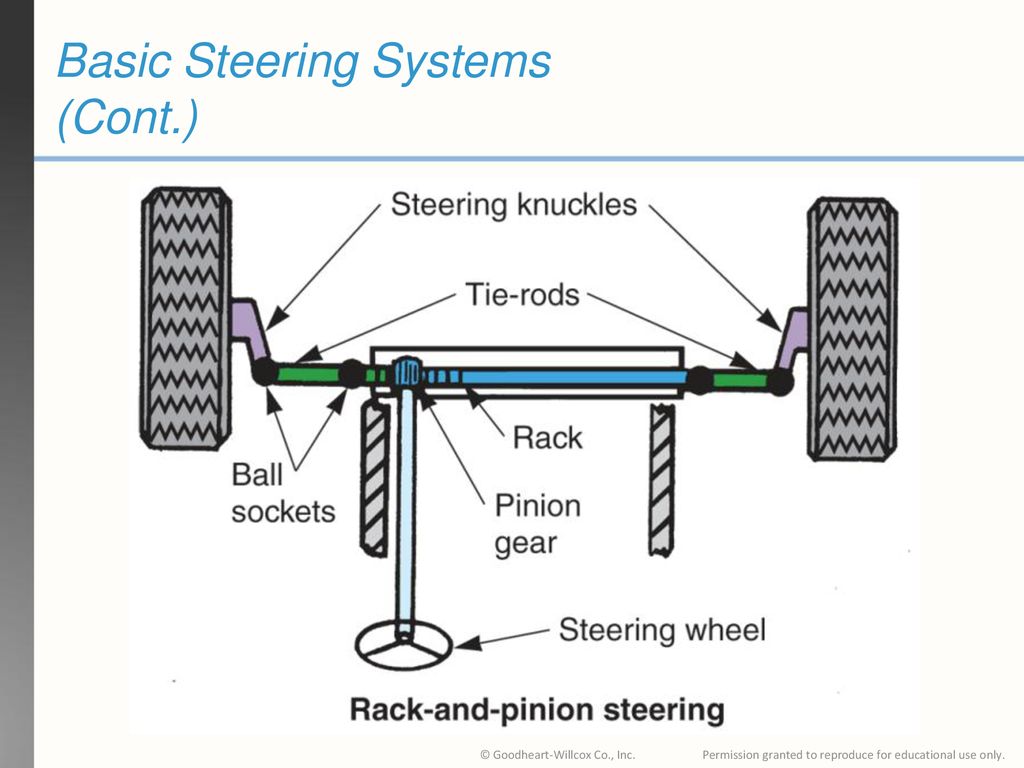 It depends on the model of quad to how it changes.
It depends on the model of quad to how it changes.
bradley300
06-02-2005, 10:27 AM
wouldnt the polaris predators PRO steering desingn totally eliminate bump steer since the tie rods are on the same axis as the a-arms? or do i not understand that system as well as i think?
TBD
06-02-2005, 10:37 AM
I'm getting ready to build arms for the Predator. I will let you know just how much, if any at all, bumpsteer it has. It does appear to be very close. What you're thinking is right.
EASTHILL
06-02-2005, 12:31 PM
Bump steer is the slight turning of a wheel away from its normal direction, as it moves through its suspension travel. In reference to the front end, bump steer is associated with the tie-rod/linkage-arm relationship.
:)
400ex28
06-02-2005, 12:49 PM
:eek2:
250xTrailRider
06-02-2005, 01:41 PM
Ok guys. Thanks. I'll have to move the front suspension around (by hand) to see what pieces are moving where.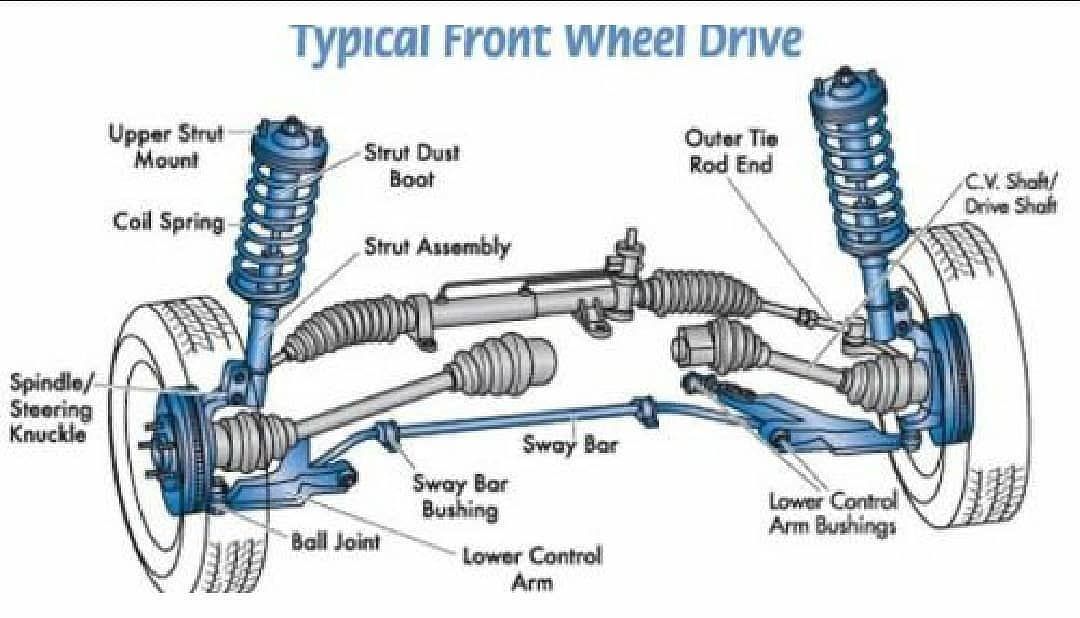 I found this online "On competitive machines, as you lean into a corner or nose into a whoop, it feels like the quad is steering you instead of the other way around. That's unwanted toe change or bump steer." Any other input would be great. Would a steering stabilizer help reduce this? Like the ones from PEP or Scott's or GPR.
I found this online "On competitive machines, as you lean into a corner or nose into a whoop, it feels like the quad is steering you instead of the other way around. That's unwanted toe change or bump steer." Any other input would be great. Would a steering stabilizer help reduce this? Like the ones from PEP or Scott's or GPR.
T2RACING
06-02-2005, 02:38 PM
I love my stabilizer... good investment
woodsZrider
06-02-2005, 08:31 PM
when riding a long time or in a long race they are life savers...:cool:
Fred55
06-02-2005, 08:42 PM
Originally posted by bradley300
wouldnt the polaris predators PRO steering desingn totally eliminate bump steer since the tie rods are on the same axis as the a-arms? or do i not understand that system as well as i think?
Yes it does! it helps a lot!
Tom TRX250R
06-02-2005, 11:06 PM
I have ridden a few Predators and they are probably the best quad for having the least amount of bumpsteer! Though the *** end has a tendacy to tail slide a bit too much in the turns!
bradley300
06-03-2005, 06:18 AM
i think the most confusing part of "bumpsteer" is the fact that it is used to describe 2 different conditions.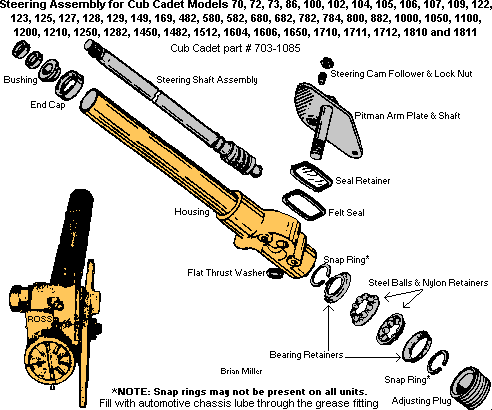 the one stated above, but also trail feed back (hitting a rock and having the bars jerk) is also known as bumpsteer to alot of people. the trail feed back is what the steering dampers are for
the one stated above, but also trail feed back (hitting a rock and having the bars jerk) is also known as bumpsteer to alot of people. the trail feed back is what the steering dampers are for
Juggalo
06-03-2005, 11:23 AM
as the front suspension compresses and decompresses your front tires toe in and toe out. in case you dont know what toe in and toe out is ill give you a quick lesson in that too.
ok pretend you are looking at your quads front tires from above the suspension is not compressed at all theres no weight on the quad its just at the normal position. your tires will look like this | | pointed straight ahead right?
now toe in is when your tires point toward each other sorta like if you were to walk pigeon toed. like this / \
now toe out is just the opposite its when your tires point away from each other like this \ /
so bumpsteer is when your quad changes its toe angle from the suspension going thru its range of travel.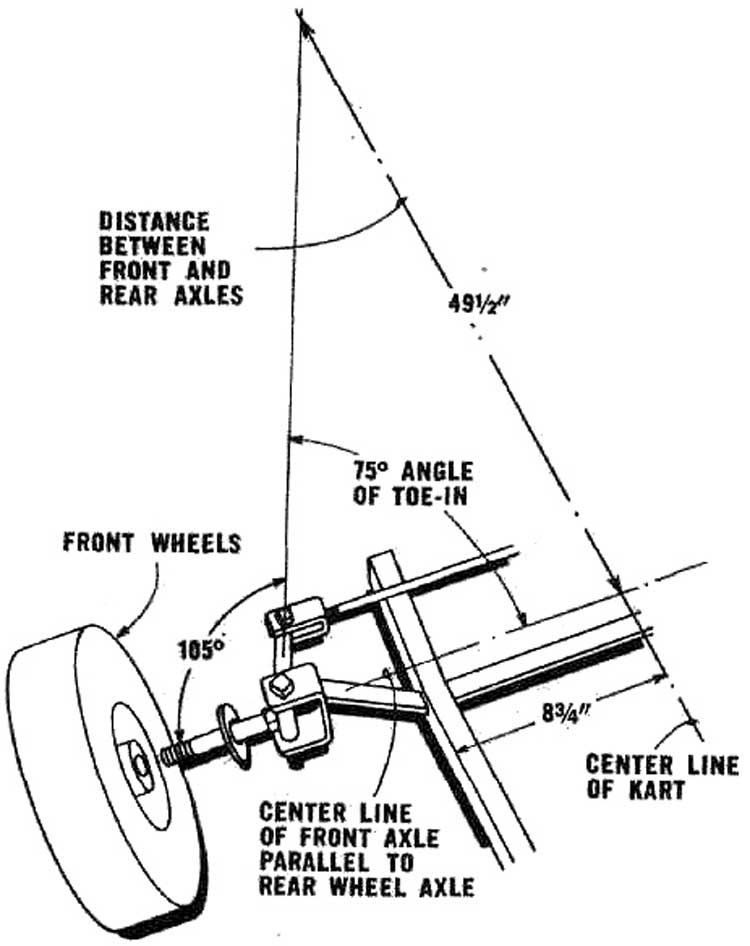
i hope that helped you out.
250xTrailRider
06-03-2005, 11:43 AM
Thanks Juggalo. So basically we want our tires like this | | the entire time. So on a "Bump Steer" condition one tire must be pointed in (or out) more than the other tire?
roscoe
04-05-2006, 08:24 AM
Originally posted by 250xTrailRider
Ok guys. Thanks. I'll have to move the front suspension around (by hand) to see what pieces are moving where. I found this online "On competitive machines, as you lean into a corner or nose into a whoop, it feels like the quad is steering you instead of the other way around. That's unwanted toe change or bump steer." Any other input would be great. Would a steering stabilizer help reduce this? Like the ones from PEP or Scott's or GPR.
A steering stabilizer will not help with true bump steer, ie the toe in - toe out as suspension moves up and down.
A stabilizer WILL help with 'bump steer' caused by a front tire hitting a rut or rock and jerking the bars around. This kind of 'bump steer' is made worse by turning the front rims around to make a wider wheel base the cheap way :) That is why it is better (although more expensive) to use +2 or extended A-arms.
This kind of 'bump steer' is made worse by turning the front rims around to make a wider wheel base the cheap way :) That is why it is better (although more expensive) to use +2 or extended A-arms.
I will spare you the tecnhical explanation of why this is unless you want it.
redrunner
04-05-2006, 10:21 AM
He's probably gone through a set of tires by now.....:eek2:
JOEX
04-08-2006, 08:06 PM
Originally posted by redrunner
He's probably gone through a set of tires by now.....:eek2:
LOL!
Old thread but good info:)
Powered by vBulletin® Version 4.2.1 Copyright © 2023 vBulletin Solutions, Inc. All rights reserved.
ATV Riders Forum > Sport ATV Model Information > Mini ATV 90cc Under ATV Sub-Forum > Xtreme ATVs > Bump Steer,Camber,Toe -in & Out,Caster
PDA
View Full Version : Bump Steer,Camber,Toe -in & Out,Caster
gmen
11-21-2007, 08:03 PM
Understanding handling and these compenets
gmen
11-21-2007, 08:04 PM
What is Bump Steer?
This is when the travel of the suspension changes the tow of the tire from it's set position. The best way to tell you what it feels like is if you've ever ridden an ATV with the wrong toe in setting down the road. It wants to dart from one side of the road to the other without any warning. Just imagine this happening to you while racing and you are fatigued! Talk about a disaster waiting to happen.
The best way to tell you what it feels like is if you've ever ridden an ATV with the wrong toe in setting down the road. It wants to dart from one side of the road to the other without any warning. Just imagine this happening to you while racing and you are fatigued! Talk about a disaster waiting to happen.
How do you know if you have bump steer for sure and how much?
Take off your shocks and measure there overall length from eye to eye. Then measure there shaft length. Subtract the shaft length from the eye to eye measurement. Then align your handlebars so they are straight. Put a jack under your frame and raise it until the measurements from where the shock mounts to the frame to where the shock mounts to the A-arms is equal to your eye to eye measurement. Now take a tow in measurement and write it down. Lower the jack until the shock mount to shock mount locations equals the eye to eye minus shaft length. Measure your toe in again. If it is the same amount of tow in before you lower the quad then you have hardly any bump steer.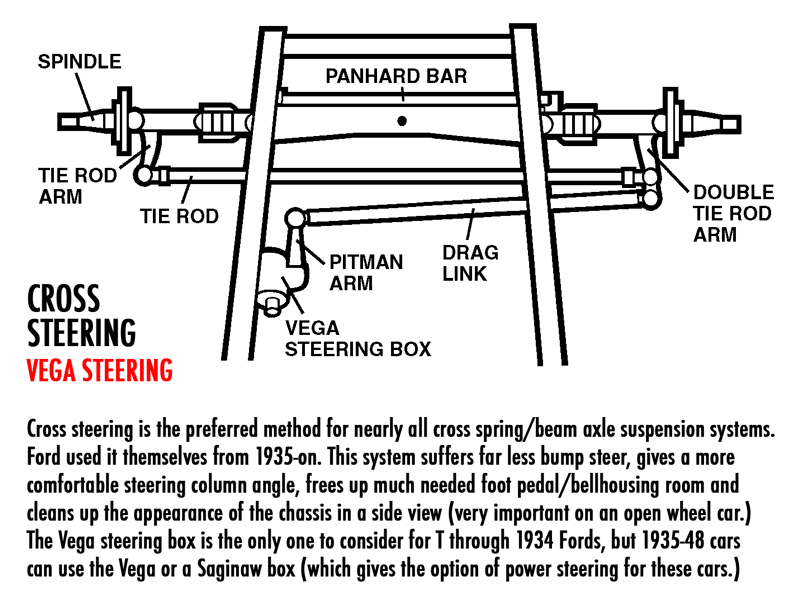 But if they are different, then you have some bump steer!
But if they are different, then you have some bump steer!
Ok, Now that you know you have Bump Steer. How do you eliminate or at least improve it?
The easiest way to accomplish this is by raising or lowering the tie rod ends. This will be a trial and error procedure. I would recommend raising or lowering them at least 1/8" at a time so you can tell much easier which way you need to move them. If bump steer gets worse, then go the other way. The easiest way I have found is to put a washer under the tie rod ends to raise them. In some extreme cases though you may have to cut the tie rod end mounting plate off of your steering stem and relocate it higher or lower on the stem.
gmen
11-21-2007, 08:05 PM
What is Camber ?
Camber is the angle of the wheel relative to vertical, as viewed from the front or the rear of the car. If the wheel leans in towards the chassis, it has negative camber; if it leans away from the car, it has positive camber . The cornering force that a tire can develop is highly dependent on its angle relative to the road surface, and so wheel camber has a major effect on the road holding of a car. It's interesting to note that a tire develops its maximum cornering force at a small negative camber angle, typically around neg. 1/2 degree. This fact is due to the contribution of camber thrust, which is an additional lateral force generated by elastic deformation as the tread rubber pulls through the tire/road interface (the contact patch).
It's interesting to note that a tire develops its maximum cornering force at a small negative camber angle, typically around neg. 1/2 degree. This fact is due to the contribution of camber thrust, which is an additional lateral force generated by elastic deformation as the tread rubber pulls through the tire/road interface (the contact patch).
gmen
11-21-2007, 08:06 PM
What is Toe -in / Toe -out
When a pair of wheels is set so that their leading edges are pointed slightly towards each other, the wheel pair is said to have toe-in. If the leading edges point away from each other, the pair is said to have toe-out. The amount of toe can be expressed in degrees as the angle to which the wheels are out of parallel, or more commonly, as the difference between the track widths as measured at the leading and trailing edges of the tires or wheels. Toe settings affect three major areas of performance: tire wear, straight-line stability and corner entry handling characteristics.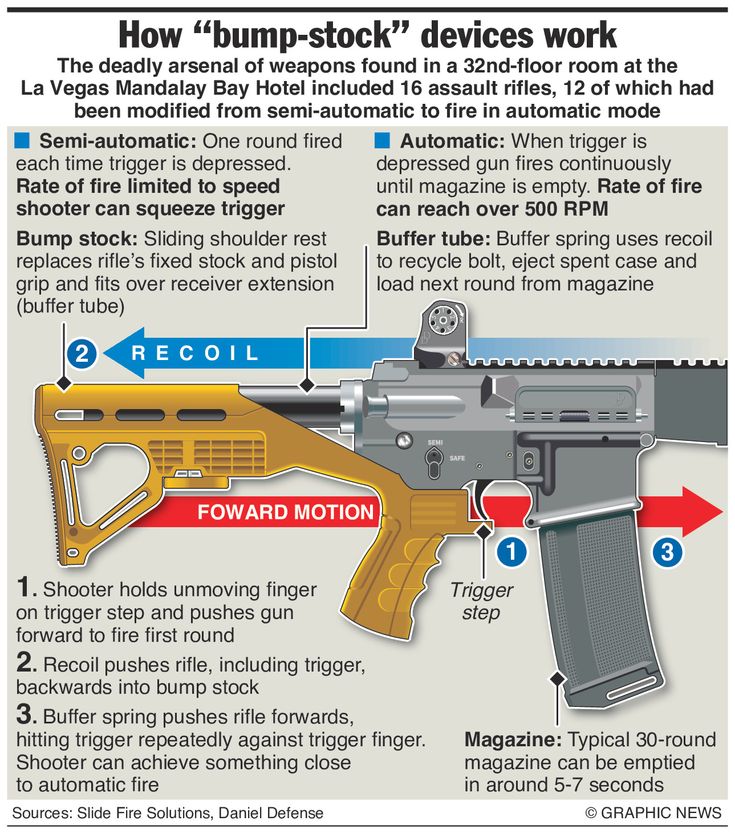
gmen
11-21-2007, 08:09 PM
What is Caster ?
Caster is the angle to which the steering pivot axis is tilted forward or rearward from vertical, as viewed from the side. If the pivot axis is tilted backward (that is, the top pivot is positioned farther rearward than the bottom pivot), then the caster is positive; if it's tilted forward, then the caster is negative.
Caster ,is the move the a-arm at the point of the chassis front to rear,think of a shopping cart.
This gives you your roll through the corner,the more caster,the more roll and thus the more braking required.
Less caster,and cart will not roll freely.thus requiring less breaking. Greg
gmen
11-21-2007, 08:25 PM
Caster is not as important to us (ATV) as with our quarter midget cars,we need roll through in the corner OFF - POWER,but the other three are really important.
I wanted to share my knowledge of these suspension componets and handling characteristics with you all . Maybe this will help you all in the whoops ,or just keeping it straight with less fatigue .
Maybe this will help you all in the whoops ,or just keeping it straight with less fatigue .
Bringing a little something from the road to the dirt.Greg
Jaybird
11-22-2007, 07:07 AM
You can adjust caster on any quad that uses heim joints on the a-arms (Typhoon). You just move the front of the a-arm forward or backwards by screwing the heim joints in or out. To move the bottom a-arm forward just unscrew the bottom rear heims. You have to reset camber and toe when you get done. I just put some positive caster and negative camber in my kid's Typhoon and it really helped keep it straight through the bumps and made it less twitchy.
Brian
gmen
11-22-2007, 07:24 AM
You are absolutely right Brian
I did not realize you could move the a-arms forward or backwards at the frame mount . My bad ,
I understand now,adjust one and it moves it back or forward.
greg
Jaybird
11-22-2007, 03:39 PM
Yea, I wish all of them had heims on the a-arms.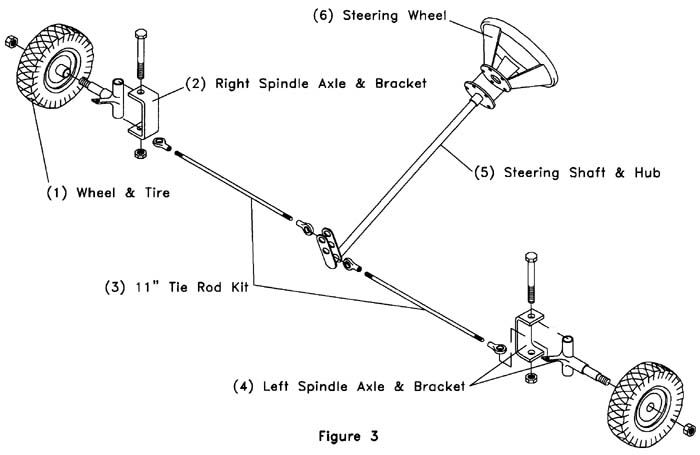 The only bad thing is when you fool with one adjustment it throws something else out. It takes a little trial and error but when it's dialed in it is so much better.
The only bad thing is when you fool with one adjustment it throws something else out. It takes a little trial and error but when it's dialed in it is so much better.
Brian
gmen
11-22-2007, 04:05 PM
I could see what else it would effect making that adjustment..
I can see the tires being pulled in when the front heims are lenghtened
In this application you cannot just move the a-arm assembly back or forward and remain neutral in toe and camber.
Greg
Powered by vBulletin® Version 4.2.1 Copyright © 2023 vBulletin Solutions, Inc. All rights reserved.
From time to time, the ATV will be naughty and behave differently than you would like. Nothing beautiful lasts forever, right?
One of the most common problems you may encounter is the ATV suddenly pulling to the left or right.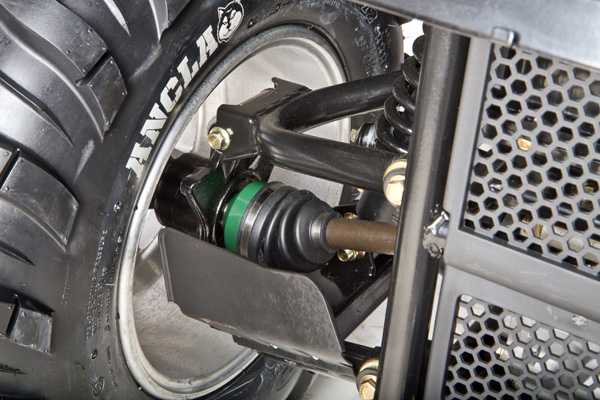
If you are lucky, your problem may have a simple solution)
Let's take a look at some of the most common reasons why an ATV can pull to the side, and of course, here we will talk about how to get rid of these problems.
The most common problem that causes the ATV to pull to one side is the difference in rolling resistance due to different tire pressures. Also, the problem may be associated with natural wear or damage to various components of the chassis of the ATV and, as a result, a violation of the angle of the wheels.
So how do you determine what is causing problems when riding an ATV?
As you probably already understood, there can be several reasons.
To understand why an ATV wants to pull off the road and dive into a ditch when you really don't want to, you need to do a number of checks.
Although I don't have exact statistics to tell you which malfunction occurs most often, I still recommend that you start with what is easiest to check and fix before spending time and money on more unusual and potentially more complex searches.
In my experience, the most common cause, and by far the easiest problem to check and fix, is uneven ATV tire pressures.
Let's look at what happens when ATV tires have different pressures.
A flat tire has a larger area of contact with the road surface than a normally inflated wheel, as a result of which the friction force, and hence the rolling resistance force, applied to such a wheel will be higher. The wheel will roll more slowly. The opposite wheel will run ahead and try to turn the ATV around the slow wheel. That is, if the ATV pulls, for example, to the left side, most likely, the fact is that the left wheel is lowered.
To solve this problem, you need to equalize the air pressure in the ATV tires. It is best to refer to the operating instructions, which must indicate the required air pressure in the wheels recommended by the manufacturer. The pressure in the wheels installed on the same axle of the ATV must be the same.
At the same time, you should be aware that due to the design features and weight distribution of the ATV, the tire pressure on the front and rear axles may differ.
Check with a good tire pressure sensor.
Most manufacturers complete the ATVs with a set of tools and a sensor for checking air pressure in wheels, for example, ATVs Yacota SELA 200 , Yacota SELA 150 , Yacota Cabo 200035, Yacota Cabo 20034 , , MOTAX 200 , MOTAX GRIZLIK and MOTAX RAPTOR .
ATVs MOTAX and YACOTA have these sensors in the standard tool kit. If there is no such device in your kit, I recommend that you definitely purchase it. A very slight difference in air pressure in the tires may well be the reason that the ATV pulls to the side when driving in a straight line.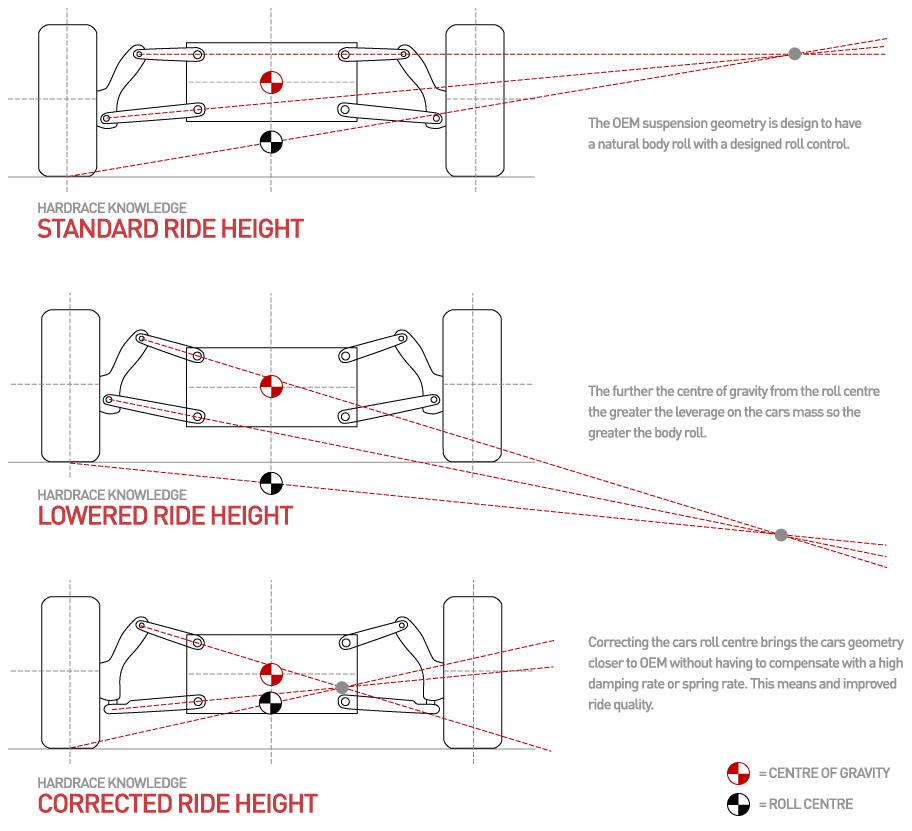
The air pressure should be checked in both front and rear tires. True, uneven pressure in the rear tires, most likely, will not be the reason for the withdrawal of the ATV from a straight path. Different pressure in the rear tires can provoke another malfunction - premature wear of the rear differential, due to the increased load on it. But this is a story for a separate review.
I always keep this inexpensive instrument in my toolbox, its accuracy is good enough to use.
Also make sure that the maximum tire pressure is not exceeded.
Over time, ATV wheels can wear differently, resulting in the diameter of one wheel being different from the diameter of another wheel. This can also cause the ATV to pull to the side.
To check if the front wheel diameters are the same, you can do a simple check: place the ATV on a flat surface and use chalk to mark the sidewall of each front tire at the lowest point.
Wheels must be pointing straight ahead, gear lever in neutral position. Roll the ATV forward until one of the wheels has made two or three revolutions and the mark you just made is back to the very bottom, to its original position. Look at the mark on the opposite tire. Ideally, it should also be at the very bottom. If this is not the case, the wheel circumferences do not match.
Roll the ATV forward until one of the wheels has made two or three revolutions and the mark you just made is back to the very bottom, to its original position. Look at the mark on the opposite tire. Ideally, it should also be at the very bottom. If this is not the case, the wheel circumferences do not match.
If the reason for the ATV pulling to the side lies in the difference in wheel circumference, then when driving to the right, the right tire should have a smaller circumference, and when driving to the left, the left one.
Wheel circumference can vary not only due to uneven wear, but also due to air pressure differences in the tires.
The wheel is like a balloon, the higher the pressure, the larger its diameter and vice versa.
For this operation, you need to lift the ATV, place it steadily on the supports so that all the wheels are in a suspended state.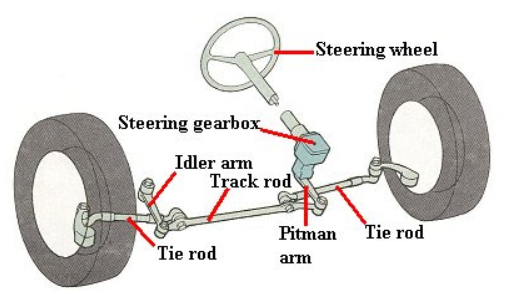
It is very convenient to use the bike racks to lift the ATV. If you do not have them yet, and you plan to service the ATV yourself, I recommend purchasing them. They are relatively inexpensive. Tackles will greatly simplify the ATV maintenance process.
Check that there is no excessive play in the ATV suspension and steering joints. Start with the tie rods and steering rack. This operation is more convenient to carry out with an assistant. Have an assistant move the ATV handlebars to the right and left, often and with a small range of motion. And you, in turn, keep your hand on the swivel, which are subject to verification. Check the steering tips and tie rods one by one. You will feel the excess play in the hinge with your hand. If the ATV steering wheel has excessive play, but the tie rod and steering tip are in order, then the steering rack itself or the steering shaft bushing may have play, which can also be checked by hand. The steering column bushing usually wears out over time.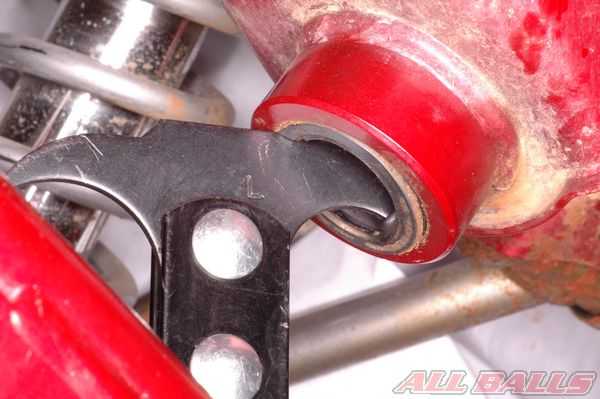 The same goes for the ball joints on the tie rods.
The same goes for the ball joints on the tie rods.
Tighten any loose bolts and replace worn parts. Worn parts can break soon, so replacing them won't be a waste of money, even if their wear isn't the reason your ATV pulls to the side.
In addition, the wheel bearings must be checked for excessive play.
To do this, have a helper grab the top and bottom of the wheel and shake it while you check for play in the ball joints and wheel bearings.
Check how easy the wheels turn. The wheels should rotate freely, without noise and crackling. The presence of noise indicates wear on the hub bearing. And the tight running of the wheel is about bearing wear or souring of the brake pads. As we said, if one of the ATV's wheels is spinning at a slower speed than the other wheel, the ATV will pull towards the slow wheel.
If necessary, replace the bearings and service the front brake calipers. Sometimes the caliper is easy enough to clean, and sometimes you can’t do without replacing the brake cylinders or the caliper bracket itself.
Complete the work with suspension lubrication. The chassis of ATVs of the brands YACOTA , MOTAX , AVANTIS is equipped with special grease fittings through which you can easily lubricate the desired suspension unit. We have already told, in one of the reviews, using the example of a gasoline 125 cc ATV MOTAX T-REX , about the features of maintenance of the ATV suspension. Regular maintenance of your ATV will definitely prolong its life.
Control check three: check the running gear for geometry violations.
If you use the ATV for active riding or sports, then it is possible that you have bent some part of the suspension on the next jump. ATV front suspension A-arms are especially prone to damage if you hit a stump or rock while riding. "Fast-growing" trees suddenly appearing in front of the ATV as you drive, a common story!)
A-arms are designed to absorb heavy suspension shock and, through their integrity, retain more expensive and hard-to-find ATV parts that are more difficult, more expensive or even impossible to repair, for example, an ATV frame. It is not always easy to see if the suspension arm is bent or not. It happens that the levers do not have a symmetrical shape, because the ATV suspension was originally designed this way by the manufacturer.
It is not always easy to see if the suspension arm is bent or not. It happens that the levers do not have a symmetrical shape, because the ATV suspension was originally designed this way by the manufacturer.
Compare the distance between the axles of the front and rear wheels of the ATV on the right and left sides. If there is a difference, then one of the suspension arms is most likely damaged.
The camber and toe angle can be adjusted by eye yourself, but it is better to contact specialists who have the necessary measuring equipment and data on the required wheel alignment values.
I hope you find this article useful.
For all questions related to the purchase, selection and repair of ATVs and other equipment presented in the VEZDEHOD online store, please contact our consultants. We will be happy to help you choose a new ATV according to the specified parameters and solve any technical issue related to the malfunction of already purchased equipment.
December 05, 2018 Sergey
good tire
Good tread. Even the low-profile "dressed" on the disk quite calmly. Soft and not at all noisy.
Even the low-profile "dressed" on the disk quite calmly. Soft and not at all noisy.
Like...
November 16, 2018 sveshnikov-gleb
Great tire
Brand, quality, appearance, price ....
No defects found.
Comment:
Excellent rubber, soft, tenacious, rows well and at the same time allows you to ride quite dynamically. The impressions are the most positive, so this year I bought a Michelin kit for the second car (BMW 528 and 750). Before that I drove different cars on Dunlop Graspic DS2, Nokian Hakkapeliitta...
October 19, 2018 Belyaev Roman
Great tire
Excellent quality, not noisy, keeps on ice even in heavy snow.
Soft, catching a nail on it is easy
Comment:
I have been using this rubber for the 5th season, the tread is perfectly preserved,...
05 October 2018 Petrov Vitaly
Great tire
asphalt/wet asphalt, snow/wet snow, braking, handling, lateral drift, acceleration, exchange rate, minimum drift. quiet, soft. Excellent handling on pavement sprinkled with reagent. Excellent road holding at speed. Also handling at low temperatures.
quiet, soft. Excellent handling on pavement sprinkled with reagent. Excellent road holding at speed. Also handling at low temperatures.
Ice and packed snow naturally. Well, what did you want from a European-level Velcro. otherwise there are no shortcomings.
Comment:
drove the season on these tires on Mercedes E-63 AMG (rear wheel drive) 525hp. Tires 255/35/19 front, 275/30/19 rear. Handling is super simple, in any mode the car steers like it’s on rails. The only minus is starting off, well, rear-wheel drive on with ESP is tolerable, but you can’t put spikes on this Meren either. Two to Michelin...
March 10, 2018 Shevtsov Denis
good tire
Excellent wet and dry handling, quiet and durable. Almost did not feel any discomfort during the transition from the summer.
Euro winter tires. On the snow, in principle, it's normal, but on the ice you have to be very careful and be friends with your head
Comment:
I bought rubber for use in St.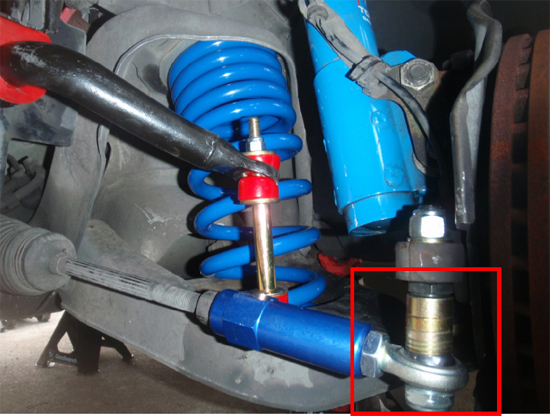 Petersburg. We haven't had winter in the past few years. But this year naturally a lot of snow fell and there were severe frosts. So the calculations were a little off. Stands on bmw 530d, four-wheel drive. In general, more satisfied than not. I have never sat anywhere and no situations ...
Petersburg. We haven't had winter in the past few years. But this year naturally a lot of snow fell and there were severe frosts. So the calculations were a little off. Stands on bmw 530d, four-wheel drive. In general, more satisfied than not. I have never sat anywhere and no situations ...
January 18, 2018 Design ABC
regular tire
Soft Fairly quiet Works well on dry cold pavement Handles well in the rain
Absolute nothingness on snow, ice and in any conditions resembling winter. Does not slow down and do not steer on slush and snowy lanes. Pulls the steering wheel to the side when the wheel hits the lane or in a snowy area. It is very difficult to regain control during demolition, you have to wait a long time until the car changes its mind, it does not respond to steering. The cost is as if the cord is made of platinum threads, and the rubber is made of natural rubber collected by virgins who have been fed lobsters, black caviar and rare species of alien fauna all their lives.
Comment:
This tire was installed on 2 cars with all-wheel drive. (MB w221 and w212) It behaves the same on both cars. (weight and dimensions are slightly different, but the weight distribution is 50:50 everywhere) I must say right away that it was taken specifically for operation in the conditions of the euro-winter. 95% of the time to drive on asphalt up to 200 km / h. He copes with his task. But no more. Clean asphalt. Everything is fine, but the braking distance is noticeably longer than that of summer tires. On long trips, it behaves quietly, calmly and steadily ...
December 17, 2017 Uritsky Igor
bad tire
Comment:
Bought in the morning, in the evening a side puncture on the very first hole at a speed of 30 km/h.
November 29, 2017 Andrey Karmanenko
Great tire
With all-wheel drive, the Quattro holds the road confidently on packed snow in deliberately aggressive cornering. Brakes on ice very confidently. Naturally not noisy. Soft but clear. A very inspiring tire. I compare with Hakka R2. Day and night in favor of MICHELIN.
Brakes on ice very confidently. Naturally not noisy. Soft but clear. A very inspiring tire. I compare with Hakka R2. Day and night in favor of MICHELIN.
Haven't noted any yet.
Comment:
I'm writing from my first impressions as soon as the first normal layer of snow covered the streets of the capital. car A4 allroad 2016, B9 body, first winter, respectively, just bought tires MICHELIN Pilot Alpin pa4 r18/245/45. Fundamentally chose non-thorns, tk. according to personal observations, absolutely most of the time the wheels spend on the pavement. Even in winter, even outside the city, and on the Moscow-St. Petersburg highway, and even in Finland. Not to mention Moscow itself. On full drive, I think the spikes are not relevant at all ...
September 18, 2017 Msk Fantom
regular tire
Relatively strong sidewall, walks normally in pits. Were in 245/45/R19 For Eurowinter, in Russia on dry roads.
On snow or ice, this rubber is useless. Does not slow down, does not rulitsya, a little noisy. Rubber for clean asphalt. If...
05 February 2017 Churyukanov Vyacheslav
good tire
reliable
quiet
for European winter (for asphalt)
price
is enough for about 30,000 km
Comment:
for the second winter (~10,000 km), mainly on cleared city (Minsk) and country roads. I drive without fanaticism (distance, speed, etc.) almost every day, so I get into all sorts of weather conditions.
In general, the rubber behaves predictably. But there are 2 points because of which I, in fact, am writing a review:
1) The car practically does not drive on ice. I can't safely drive into a parking space that's on a slight slope. If I accelerate, I drive in, but I sweat, because I'm afraid that the braking distance may not be enough :)
2) With fresh deep snow, the situation is similar.